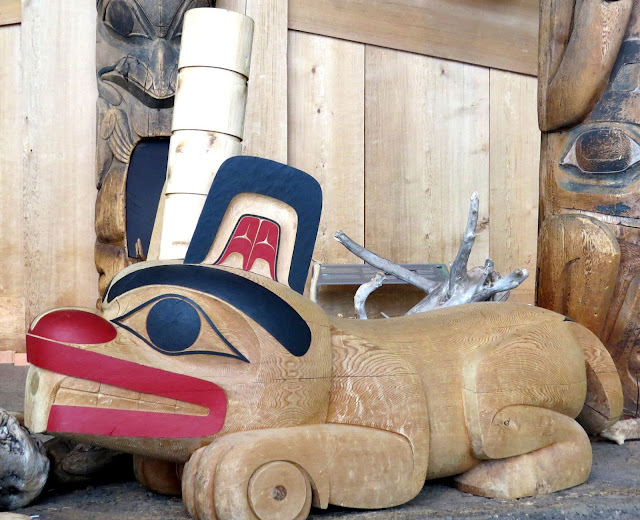http://www.douglasreynoldsgallery.com/jim-hart
https://en.wikipedia.org/wiki/Jim_Hart_(artist)
 |
| https://commons.wikimedia.org/wiki/File:Beaver_Manda_by_Jim_Hart,_Canadian_Museum_of_History.jpg |
Photo Description
English: Beaver "Manda", by Jim Hart, 1995, Canadian Museum of History
Date 21 February 2016
Source Own work
Author D. Gordon E. Robertson
https://en.wikipedia.org/wiki/Jim_Hart_(artist)
Hart was born in Massett, Haida Gwaii, British Columbia. His mother, Joan Hart, is the grand-daughter of Charles Edenshaw. His father was European, allowing Hart to escape the Canadian Indian residential school system that many Haida of his time were sent to. Instead, he grew up with his grandparents and became a fisherman.[2]
Hart discovered his passion for Haida art in high school. He began carving seriously in 1979. Hart first apprenticed with Robert Davidson in 1978 to help construct a set of totem poles. From 1980 to 1984 he became an assistant to Bill Reid in Vancouver, who by then was too seriously afflicted with Parkinson's disease to do much of his own carving. He began his work with Reid by putting the finishing details on The Raven and the First Man, a centerpiece of the Museum of Anthropology at UBC, and he also assisted on Reid's Spirit of Haida Gwaii / The Jade Canoe.[2][4]
Hart lives in both Vancouver and Haida Gwaii.[2] In Haida Gwaii, he is known as ˀIdansuu, a hereditary chief name that he received in 1999 after it had earlier been held by Charles Edenshaw.[2][3] As chief he belongs to the Hereditary Chiefs Council of the Haida Nation.[5] He was awarded the Order of British Columbia in 2003.[6] Read more